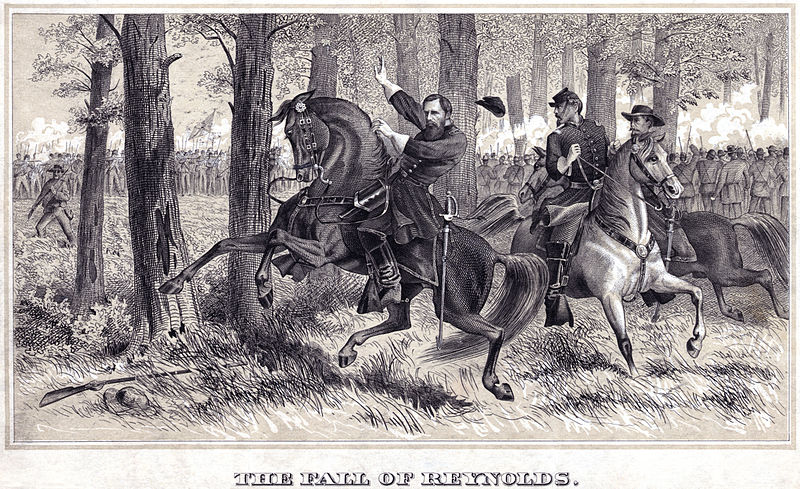Gettysburg Live 150 – 10:15am – Confederate Attack Repulsed
All morning, General Heth has been trying to bring up more of his men, and form them into battle lines to overwhelm the Union position. By now (150 years ago, of course) he has 2 of his 4 brigades formed – Davis’ on the north side of the Chambersburg Pike, and Archer’s on the south side. Now, they begin their main assault.
Davis’ men make some progress against Cutler’s brigade near the railroad cut. Cutler is forced to withdraw most of his overwhelmed men to a position on Seminary Ridge. The gains are short-lived though, as the remaining part of Cutler’s men, along with help from the 6th Wisconsin Infantry of the “Iron Brigade” is able to flank Davis and force his men into an unfinished railroad cut that quickly becomes a trap many of them won’t escape from.
On the Confederate right, things are looking much better. Archer’s brigade is so large and well-positioned, that Archer realizes he can flank and completely envelope Cutler’s left. The Union troops will have no choice but to retreat in disarray. Archer swings his men to the south, and turns northeast to begin the maneuver, crossing over Willoughby Run and entering Herbst Woods.
And then, the unexpected happens.
On Archer’s right, charging down the hillside of McPherson’s Ridge in line of battle, is the bulk of the newly-arrived Union “Iron Brigade” (minus the 6th WI, of course). They slam into Archer’s right flank and completely de-rail his attack. Archer’s men will struggle in vain to maintain their momentum.

In the course of ordering the 2nd Wisconsin Infantry into position at the eastern edge of Herbst Woods, General Reynolds is shot in the back of the neck by a Confederate ball. He is killed instantly. Before the major fighting has even begun, Maj. General John Reynolds becomes the highest-ranking man to be killed at Gettysburg.